Genre: Simulation Developer: Accolade Publisher: Accolade Players: 1 Released: 1993
Lather, rinse, and repeat. We’ve heard these words many times before to describe games that are plagued with repetitive action. WarpSpeed, released by Accolade in 1993 is another victim of that formula. In the distant future Earth is at peace and the populace devotes most of its resources to the colonization of planets and dispatching exploratory probes into black holes on the outer edges of the galaxy. Little did they know that these probes would provoke an interstellar invasion of Earth’s outer colonies and outposts by an alliance of alien races known as the Horde. Like the Legion of Doom, the Horde’s only objective is conquest of the universe so the Galactic Armed Services or G.A.S. as they are referred to in the manual, select you to pilot their newest starfighters to beat back the alien menace.
It sounds like the plot to every great shmup ever made, right? Well it is, except that WarpSpeed isn’t a shmup; it’s a space combat sim, similar to the likes of such superb PC classics as X-Wing, TIE Fighter and Wing Commander with one exception: its nowhere near as good as those games.
At the main title screen you’re given a host of options on how you want to play the game. You can start with one of the seven standalone scenarios that begin with basic training to learn the ropes of space combat, navigating through black holes and docking at star bases. Other scenarios include attacking pirates, engaging capital ships, rescuing besieged star bases and three search and destroy style missions each with their own variations on that theme.
There are two difficulty options, novice and expert. Expert tends to escalate things pretty quick so you’ll want to stick with novice on your first time through. WarpSpeed’s main event is the campaign, which is a series of four missions that are selected at random from a master list of ten missions. They all have the same overall objective of exterminating the enemy before moving onto the next one. At the conclusion of each mission you’re given a password to continue playing later or you can keep going and try to finish the game in one sitting. Taking the marathon route could take between four to six hours in total and if you’re destroyed at any point you can continue up to three times at the start of the battle you were killed in.
There are four starships to pilot in WarpSpeed and naturally, you’re given the crummiest one to start saving the galaxy in. Earning points in missions will allow you to upgrade to the next ship, although you may be assigned a better ship depending on the mission objective. Each ship has their own loadout of weapons and armor, yet they all handle the same during a dogfight. The heaviest ship is just as fast as the lightest one. At least they all have their own individual cockpit artwork to tell them apart.
Points are awarded at the successful conclusion of each mission and you have the opportunity to score bonus points by destroying enemy ships, clearing minefields, and taking on secondary missions which come in the form of radio messages. These timed missions range from trash talking aliens who want to challenge you to a duel, star bases that need to be rescued, and scientists who request that you investigate an alien probe or artifact. These last two are the most beneficial, as you can find substantial upgrades for both your weapons and shields. All these secondary missions can be skipped if you don’t want the extra points or upgrades.
Earlier I mentioned the lather, rinse, and repeat formula, and this is the core of WarpSpeed’s gameplay. You’ll start each mission launching from star base into a first person perspective of your ship in space and then call up your long range scanner to plot a course to attack the nearest sector of enemy fighters. There is a substantial amount of freedom here, as you can attack anyone you wish in any of the up to eight quadrants in each mission. After you’ve dealt with all the enemies in your current quadrant, you pilot through a black hole which will send you into the next quadrant to repeat the process all over again. Once all the Horde starships have been destroyed the mission will end. The secondary missions do try to break up the repetition a bit but not by much. If you need to replenish your weapons and shields or need a quick repair, dock with the nearest star base and launch back into space again to continue the fight.
When you enter into a battle you’ll be going up against anywhere from one to four ships or even a capital ship that will dispatch around five to six fighters in rapid succession. Your ship’s main guns will be your primary weapon, and once you start to unlock the newer ships you’ll have missiles at your disposal. Gun fire is very, very, slow so you’ll have to do a lot of leading and maneuvering to score hits on enemy fighters who do a good job of trying to evade your shots and retaliating with their rear firing weaponry while their buddies attack you from behind. There are several different missiles to use, but they all tend to be hit or miss. Your best bet is firing one in a head on confrontation and then following it up with several bursts to gunfire to score a kill on the first pass or launch two to three missiles at once to while on an enemy’s tail to increase your chances of scoring a hit.
WarpSpeed’s controls are excellent and feature extensive use of the Start button for combos such as increasing or decreasing speed and cycling missile selections. The D-Pad is used to make your ship climb or dive in space and steer to the left or right. The A button is for firing missiles while the B button handles the guns. The C button calls up the long range scanner to plot your course, check your ship’s damage status or your overall campaign stats. As strange as it may sound, WarpSpeed’s control setup is the game’s best feature.
On the not-so-excellent front is WarpSpeed’s music and sound effects. In a game where you’re tasked with saving the universe you’d think the soundtrack would reflect the urgency of that endeavor, but it doesn’t. All the tracks lack both energy and direction and feel like there wasn’t any interest in composing a great soundtrack. The music can be turned off in the options menu if you can’t stand it anymore.
Sound effects suffer from the same problem as the music, nothing spectacular. Gun fire effects lack any kind of punch no matter what type of cannon you’re using and missile firings are dull. The chunky enemy ship explosions are about as good as things get on the sound effects front.
Despite these issues, WarpSpeed’s graphics are pretty good. Each ship has its own custom artwork for the cockpit layout and all the necessary information such as current speed, shield strength and what missile rack you have selected is easy to find. The first person space perspective gets the job done although most enemy craft appear rough around the edges and have a slight muddy look to them up close. Explosions are large and colorful and the scaling effects for docking with a star base, using warp speed, and traveling through black holes are nicely done.
Is WarpSpeed worth picking up? Most people will be put off by the repetitive gameplay and less than stellar music and sound. After the first few minutes of playing I wasn’t too thrilled with it either, but after about fifteen to twenty minutes the game started to grow on me. If you were into space combat sims on the PC during their glory days of the 1990s, or if you’re looking to try obscure Genesis games, you might find some fun with this one despite the game’s issues. Had Accolade put more time and effort into the game they could have pulled off something special here. As it turns out, WarpSpeed is a below average title that most people will probably avoid.
SCORE: 4 out of 10

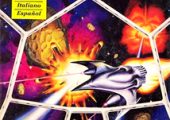
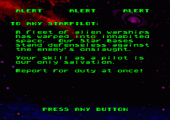
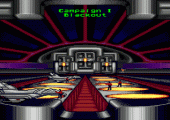
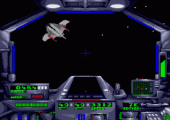
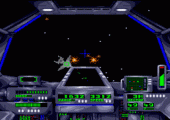
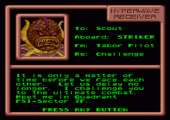
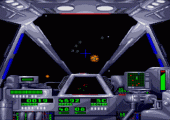
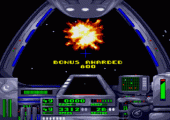
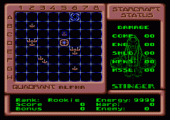
Space combat sims are one of my favorite genres. I got this hoping for Wing Commander on the Genesis. What I got was something with gameplay more reminiscent of Star Raiders on the Atari 2600. That’s not a good thing.